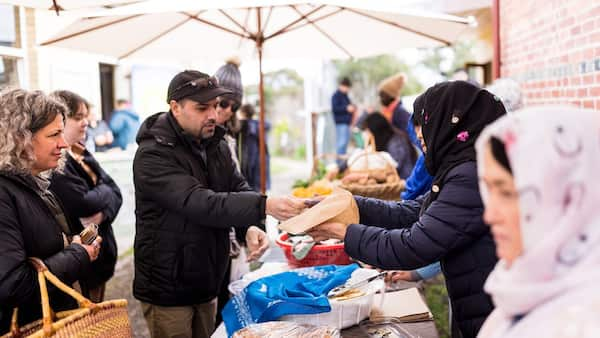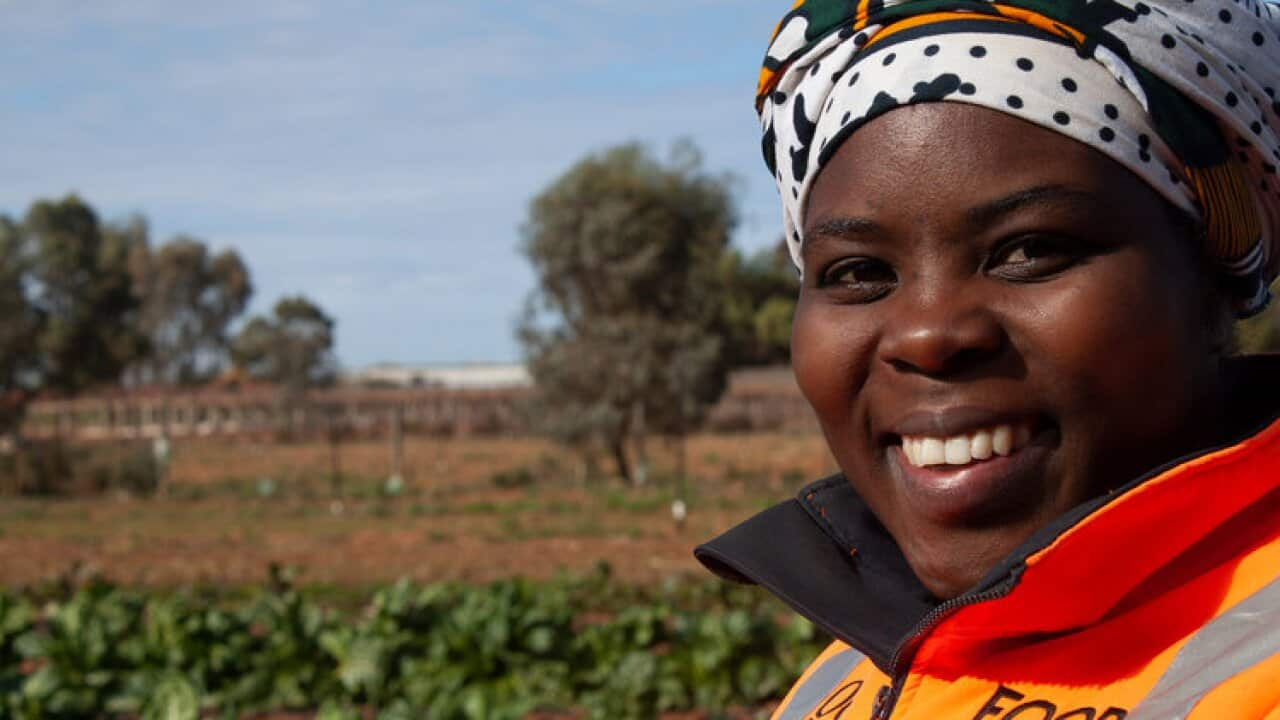Developing ties within your community can have a huge impact when facing environmental change.
You can share and trade resources to help with the cost of living, you'll know where to get support and sandbags if a flood is imminent, neighbours know to check on you if bushfires threaten, and if global supply chains are disrupted then you have other ways to find fresh food.
So what can you do to build community connection and resilience?
- Research and follow local groups, organisations and institutions on socials and through their newsletters
Find out about and ‘join’, ‘like’ or ‘follow’ local groups and organisations leading resilience building initiatives on socials. Newsletters are a good way to keep you abreast of local sustainability, regeneration and adaptation efforts and events. Help spread the word by engaging with and sharing useful resources and content with others. - Participate in community events
Attend community events, festivals, markets, fundraisers, local film screenings, presentations and fetes that help foster local culture and connections and are led by cultural groups, small business and institutions like libraries and schools. ‘Turning up’, listening, participating and spending money at these events demonstrates that you value the work these organisations do which makes future events more likely. - Attend sustainable skills building workshops.
A good on-ramp to getting involved in your local community is to sign up for a skills-building workshop. Community Centres often run a range of short courses – from sewing and visible mending workshops to preserving and making jams. These are good places to meet local people who have similar interests. - Join a local community club or group.
Participating in a local community group or club – be it related to arts, sports or schools etc – helps develop stronger social connections and so contributes to building neighbourhood resilience. Focus your efforts by joining an environmental or action/ resilience group that is both social and political. An active transport or cycling group, for example, may run both group cycling events and advocate for more local bike tracks, lanes and racks. - Initiate climate conversations
Work within your circle of influence and lead discussions about climate impacts and what we can do to adapt. There are many climate conversation starter kits online including the and the conversation tool-kits. - Lead climate adaptation right where you are
Support others to adapt right where you are - in the circles you already belong to. Initiate a compost bin in the tearoom at your workplace, help your local school or medical centre start a food garden or erect shading, talk to the sports group you belong to about rescheduling games from the hottest parts of the day or your art group about sourcing sustainable art materials. - Buy Local and support local businesses to adapt.
Use your consumer power and influence to support local businesses that provide important services within your neighbourhood. Volunteer to help local businesses find ways to adapt and transition to more sustainable practices. Help campaigns focused on requiring landlords to ensure their housing stock is climate resilient. - Explore some of the big ideas driving bottom-up or community-led responses to climate adaptation.
The Transition Movement is a global grassroots initiative focused on building community resilience and sustainability in response to climate change and resource depletion. The movement encourages collaboration between individuals, businesses, and governments and promotes practices like local food production, renewable energy, and waste reduction. Similarly, the localisation movement advocates for shifting economic, social and political structures towards greater reliance on local resources, production and decision making. Participatory democracy is a form of government and an approach to decision making that actively involves and empowers citizens, rather than having power residing solely in their elected representatives. - Seek a mentor and learn about climate leadership
Exploring new ideas, devising ways to do things differently, meeting and working with new people, and even just talking about climate change — can be a bit daunting at first. Many of us don’t think of ourselves as ‘leaders’ even when we practise leadership skills by supporting and nurturing others in our roles as family member, friend and colleague. Feel more confident to get involved in climate action by taking a climate leadership course or reading up about it. Seek out mentors who are doing climate work you admire and feel is within your reach. - Attend Public Meetings and build relationships with local government.
Get involved in local civic life. Attend and participate in town hall meetings and council-initiated consultations and forums where climate related issues are discussed and public responses planned. Forge relationships with local government officials such as your council climate change officer and voice your concerns and ideas for building community resilience. - Volunteer for local not-for-profit organisations
Volunteer or offer support to a local sustainability, disaster response or social welfare not-for-profit operating in your area. Roles can range from work on the ground collecting rubbish at an event, sorting through donations at an opportunity shop or a management position on the board. Contributing your time and skills to these efforts strengthens community bonds and builds collective resilience. - Start or join a Neighbourhood Resilience Network
Establish a network of households within your neighbourhood that is focused on building resilience to climate impacts. This could be starting a neighbourhood group to establish a communal vegetable garden, supporting each other to develop emergency response plans or to share the task of composting kitchen scraps or recycling specialty items. Small grants are often available from councils and other organisations to support these activities. Social platforms can also be tools used to connect with neighbours and set up ways to share resources, exchange information and collaborate on resilience-building initiatives. - Support the communal sharing of skills and resources
Join a book library; tool, toy or seed library, hire a plot in a community garden, join a men's or women's shed, volunteer fixing and mending skills at a regular repair cafe - or set up a carpool at work or for regular activities. Sharing skills and resources reduces consumption and builds our capacity for working together. - Prioritise ensuring your neighbourhood is climate resilient.
Lend your support to a community investment scheme designed to pool funds from community members to spend on projects or ventures that benefit the whole community. Volunteer for the State Emergency Services and learn how to help yourself and others in times of emergency. Invest in local food production through a community supported agriculture (CSA) scheme, which gives local growers security by sharing the risk of crop failure. Join up and start using your local currency, which ensures money spent stays in your community for longer. Put the weight of your support behind the systems and services that support you and help maintain your quality of life.
is a podcast about how regional Australian communities are learning to survive and thrive in a changing climate.
LISTEN TO

How Bendigo’s Karen community is adapting to climate change
SBS Audio
12/05/202424:58



